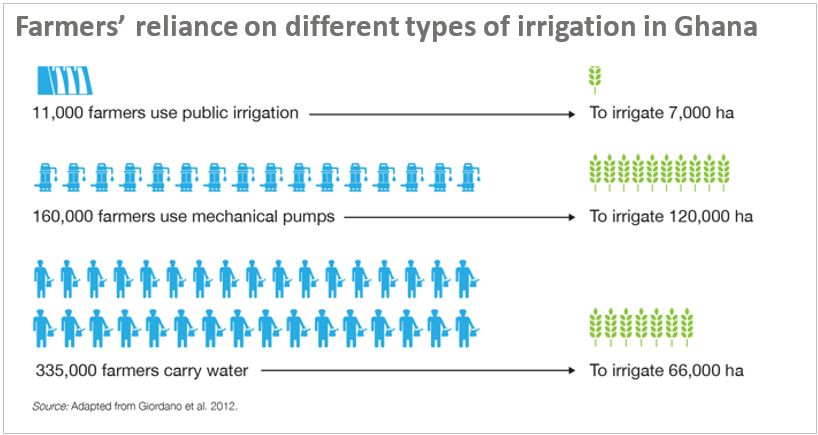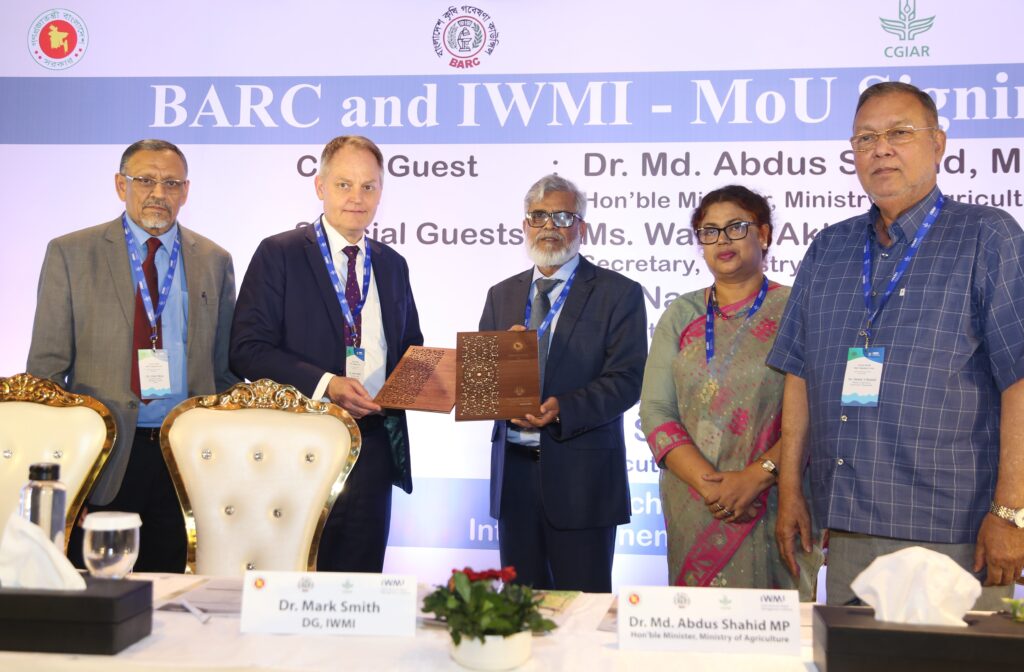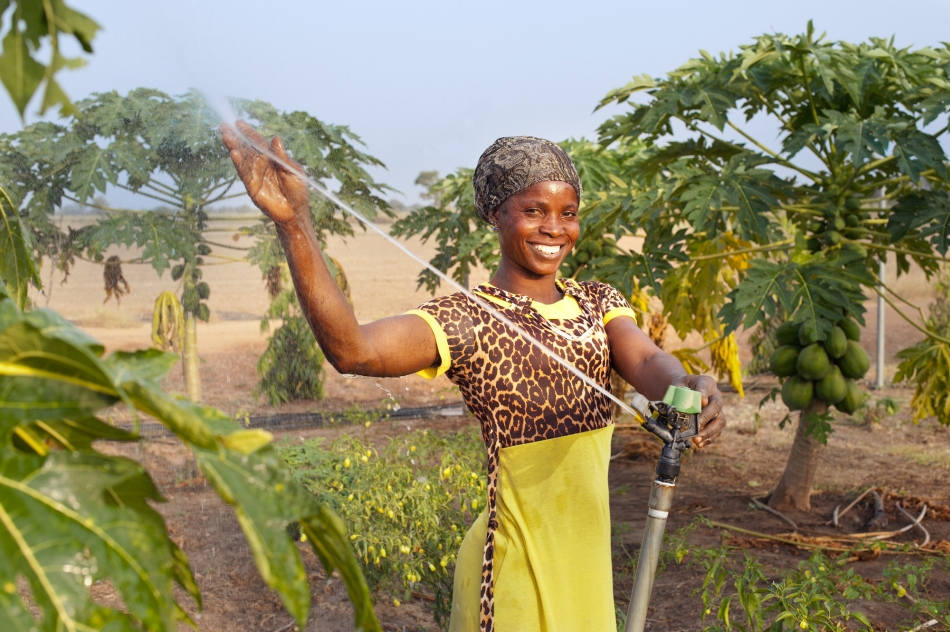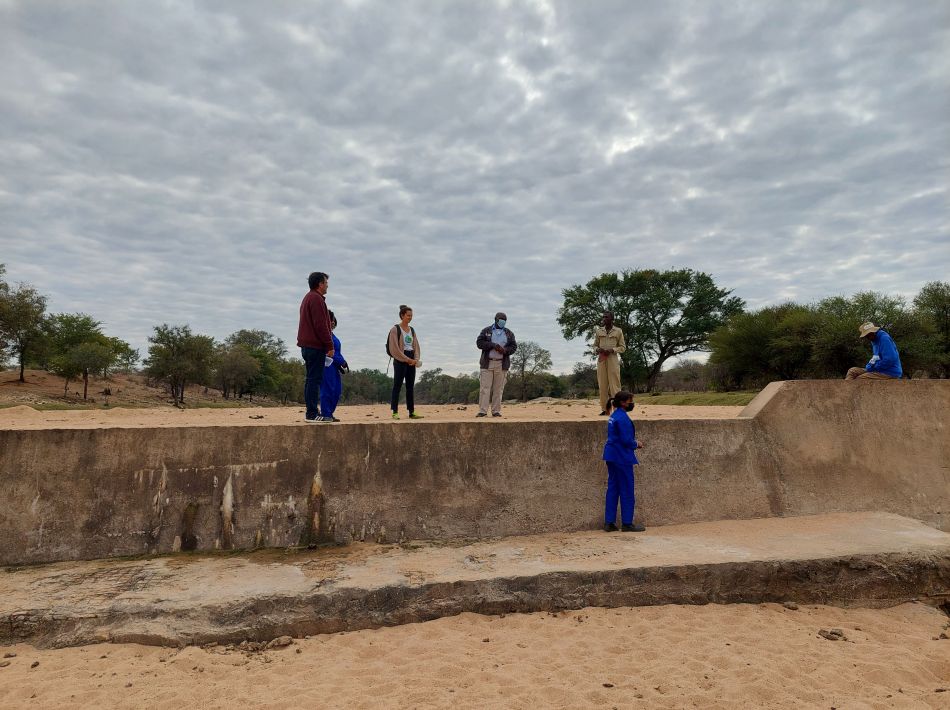Creating fertile ground for innovation in agricultural water management
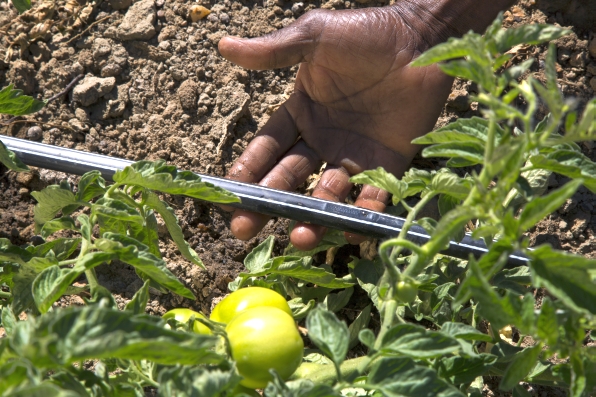
Smallholder farmers across the developing world are eager to seize the diverse advantages that improved water management practices can offer. Farm households that have access to irrigation generally fare better in terms of food security and dietary diversity than those that do not. Moreover, irrigation opens up new options for crop production during the long dry season in Africa and Asia, while also reducing damage caused by drought in the rainy season and providing water for multiple productive and domestic uses.
There is significant scope for investment in large-scale irrigation, particularly in sub-Saharan Africa, where such schemes are limited, but they are not always suitable for particular settings. In response, smallholders increasingly seek their own pathways to improved agricultural water management. In India, for example, pumps operated by smallholders serve 50% of the irrigated area. In many African countries, smallholders’ water management accounts for more irrigation than public sector schemes, in terms of the number of farmers involved, the area covered and the value of production (see figure).
There is enormous potential to ramp up the benefits through wider adoption of diverse practices. For example, in sub-Saharan Africa:
- Increasing the number of small reservoirs could support an estimated 369 million rural people for irrigation and other uses, generating net revenues of USD 20 billion annually.
- Expanding the quantity of motorized pumps could generate benefits of up to USD 22 billion per year for 185 million people.
- Rainwater harvesting has the potential to reach 147 million people, generating net annual revenues by USD 9 billion per year.
The scope for increasing these benefits as well as the challenges involved and potential solutions are key messages that researchers from the International Water Management Institute (IWMI) bring to the Water for Food International Forum – Farmer-led irrigated agriculture: Seeds of opportunity. Taking place on January 29-30 at The World Bank in Washington, D.C., the event was organized by the Daugherty Water for Food Global Institute at the University of Nebraska, USA, and The World Bank in partnership with the US Department of Agriculture and US Agency for International Development. The forum was followed on January 31 by the Symposium on Irrigation in African Smallholder Farming Systems, sponsored by the Feed the Future Innovation Lab for Small-Scale Irrigation (ILSSI). IWMI researchers gave particular attention to the role of improved technologies in boosting the potential of small-scale agricultural water management (see below a list of related links), including solar-powered pumps, which offer a more versatile, green alternative to electric pumps.
Smallholders need more than just improved technologies, however. Many of these remain beyond their reach because of high up-front investment costs, a lack of financing tools, and limited access to knowledge about irrigation management. These barriers are especially high for women and the poor generally. A further challenge is that, in the absence of appropriate incentives, pumping for irrigation can lead to rampant overuse of water resources.
To address these challenges requires a comprehensive approach that tackles the various constraints and opportunities involved in technology adoption. These factors encompass smallholders’ links with markets and the institutional support they need as well as their environmental settings. A thorough analysis of these factors tells us what impact new solutions might have and suggests how we can tailor these to better fit local conditions, thus enhancing the livelihood benefits and return on investment.
IWMI and its partners are piloting and examining a wide range of promising solutions for agricultural water management, including different business models for the introduction of sustainable, solar-powered irrigation. To create more fertile ground for innovation will require concerted efforts to:
- Widen access to information and options for financing.
- Better target new technologies to match women’s needs and preferences.
- Identify options for youth entrepreneurs
- Find ways to reduce the labor requirements of agricultural water management.
- Generate new knowledge about how specific water management technologies can strengthen farmers’ ability to withstand climate shocks and water variability.
Syntheses and overviews
- Water for wealth, water for food security: Supporting farmer-driven investments in agricultural water management (Book, IWMI)
- Building resilience through sustainable groundwater use (Insights and Solutions Brief, WLE)
- Enabling sustainable, productive smallholder farming systems through improved land and water management (Insights and Solutions Brief, WLE)
Technologies, practices and institutions:
- Solar-powered irrigation: Adding value through a business model approach (IWMI R4D Capabilities)
- Solar power as a renumerative crop (IWMI-Tata Water Policy Research Highlight)
- 10 best bet innovations for adaptation in agriculture: A supplement to the UNFCCC NAP Technical Guidelines (Working Paper, CGIAR Research Program on Climate Change, Agriculture and Food Security, CCAFS)
- Irrigated fodder opportunities for small scale irrigators (Brief, IWMI/International Livestock Research Institute, ILRI)
- Improving on-farm water management by introducing wetting front detectors to smallholder farms in Ethiopia (Project working paper, ILRI)
- Impact of Water Users Associations on Water and Land Productivity, Equity and Food Security in Tajikistan (Technical Report, USAID/IWMI
- Suitability mapping for agricultural water management – country investment briefs and regional analyses (AgWater Solutions Project)
Gender and equity
- Introduction to the gender in Irrigation learning and improvement tool (CGIAR Research Program on Water, Land and Ecosystems, WLE)
- Improving gender equity in irrigation: Application of a tool to promote learning and performance in Malawi and Uzbekistan (Research for Development Learning Series, ILRI)
- What happens after technology adoption? Gender aspects of small-scale irrigation technologies in Ethiopia, Ghana, and Tanzania (Discussion Paper, International Food Policy Research Institute, IFPRI)
- Integrating Gender into Small-Scale Irrigation (Feed the Future Innovation Lab for Small-Scale Irrigation, Project Note)
- Still marginalized after all these years . . . Why are things not changing for women in irrigation? (Thrive Blog Post, WLE)
